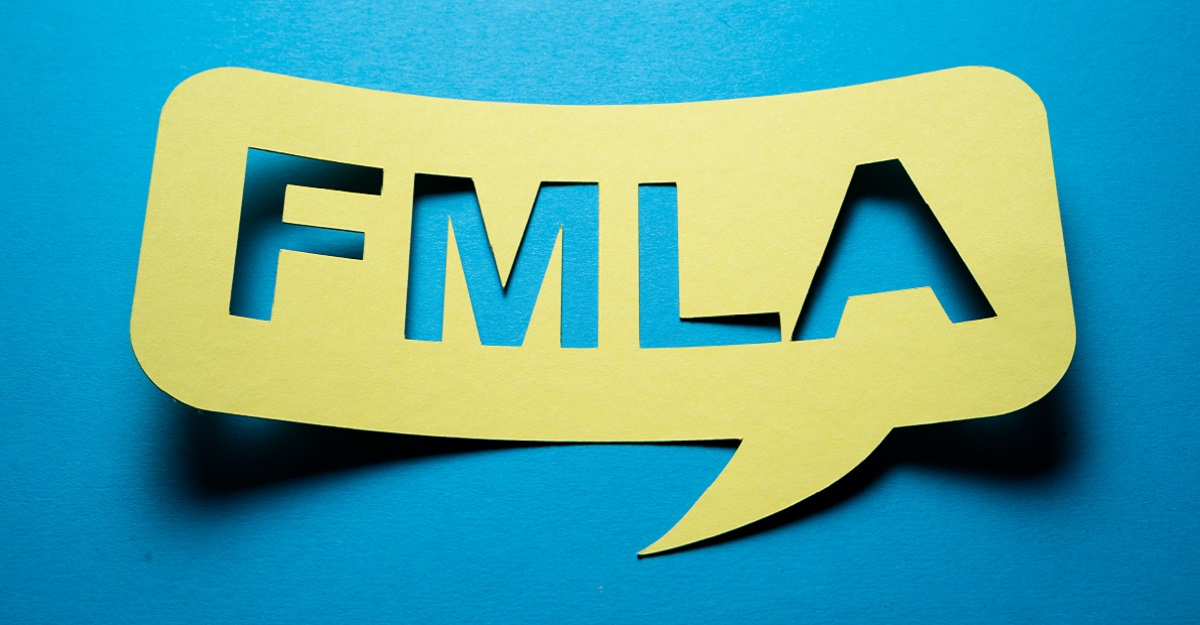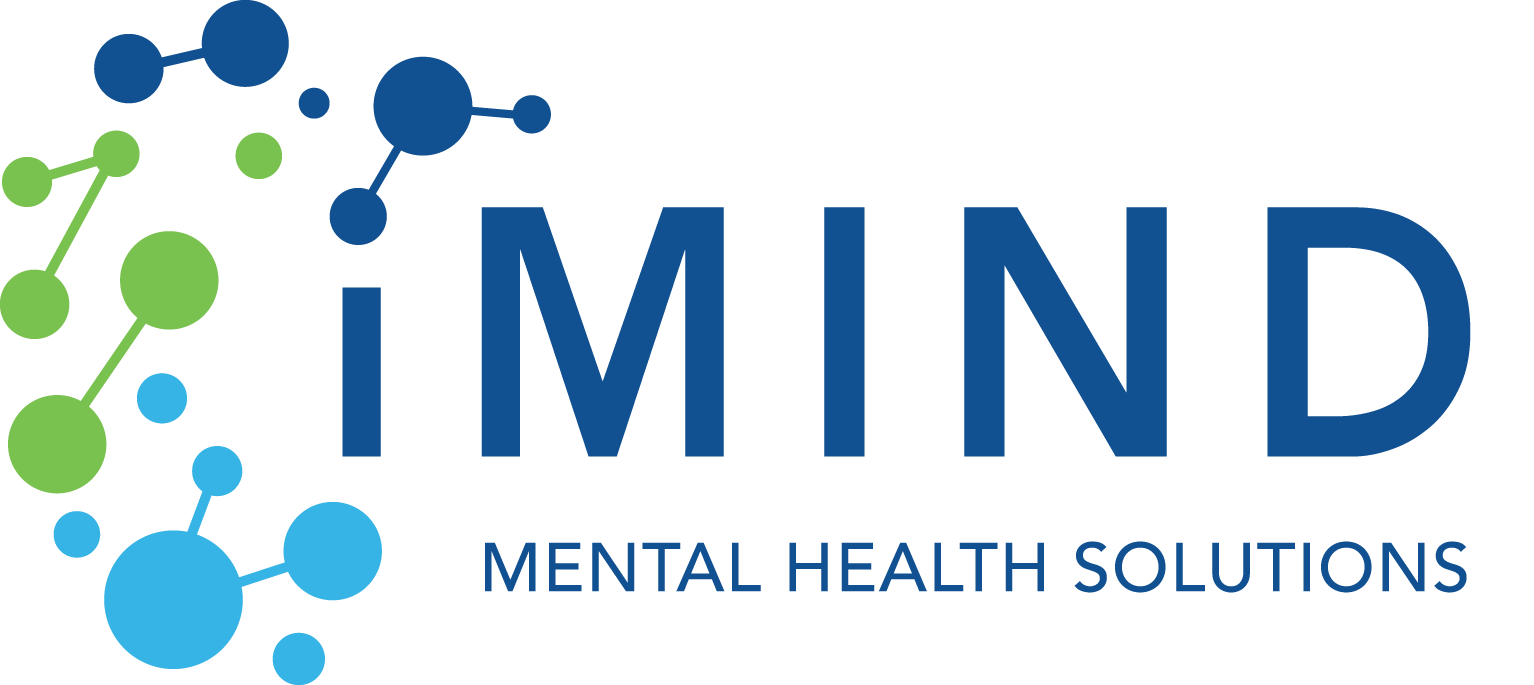Can You Use FMLA for Mental Health?
iMind Mental Health Solutions Resource

Enacted in 1993, the Family and Medical Leave Act (FMLA) is a United States labor law that grants eligible employees the right to take unpaid, job-protected leave for certain family and medical reasons, including the birth or adoption of a child, caring for an immediate family member with a serious health condition, or attending to their own health.
But What About Mental Health?
In today’s fast-paced world, it is crucial to acknowledge that mental health is just as important as physical health. Both aspects of our well-being are intrinsically connected and should be treated with equal focus and care. Maintaining a healthy mind is essential for fostering resilience, managing stress, and ultimately leading a fulfilling and happy life. Just as we exercise our bodies and nourish them with proper nutrition, we must also prioritize self-care routines and seek support when necessary to ensure our mental well-being thrives alongside our physical health.
Who Qualifies for FMLA?
Under the FMLA, eligible employees can take up to 12 weeks of unpaid leave per year to address qualifying health or family-related issues, without the fear of losing their jobs. Here are the general eligibility criteria for both employees and employers, as well as the reasons a person can take FMLA, including mental health.
What are the FMLA Qualifications & Requirements?
Employee Requirements
To be eligible for FMLA leave, an employee must work for a covered employer and meet the following requirements:
- Employment Duration: Employees must have worked for their current employer for at least 12 months.
- Hours Worked: Employees must have completed a minimum of 1,250 hours during the 12 months prior to the start of leave.
- Worksite Proximity: Employees must work at a location where their employer has at least 50 employees within a 75-mile radius.
Employer Requirements
Here are some common qualifying reasons for which eligible employees can take FMLA leave:
- Birth & Childcare: The birth of a child and subsequent bonding time with newborns up to one year after birth.
- Adoption & Foster Care: Placement of a child via adoption or foster care and bonding time within one year of placement.
- Family Illness: To care for an immediate family member (spouse, child, parent) with a serious health condition.
- Personal Illness: When an employee is unable to work due to their serious health condition.
- Military Deployments: To address certain exigencies related to an immediate family member’s active duty or call to covered active duty status in the Armed Forces.
- Military Caregiver: To care for an immediate family member who is a current service member (including the National Guard and Reserves) with a serious injury or illness incurred during active duty.
Employers are required to provide FMLA if they meet these criteria:
- Public Agency: All local, state, or federal government agencies must comply with the FMLA regulations, regardless of the number of employees they have.
- Private Sector: Private sector companies with 50 or more employees in a 75-mile radius must implement and follow FMLA policies.
- Schools: Public and private schools—including elementary schools, secondary schools, and educational agencies—are subject to FMLA regulations irrespective of employee count.
Qualifying Reasons for FMLA
Here are some common qualifying reasons for which eligible employees can take FMLA leave:
- Birth & Childcare: The birth of a child and subsequent bonding time with newborns up to one year after birth.
- Adoption & Foster Care: Placement of a child via adoption or foster care and bonding time within one year of placement.
- Family Illness: To care for an immediate family member (spouse, child, parent) with a serious health condition.
- Personal Illness: When an employee is unable to work due to their serious health condition.
- Military Deployments: To address certain exigencies related to an immediate family member’s active duty or call to covered active duty status in the Armed Forces.
- Military Caregiver: To care for an immediate family member who is a current service member (including the National Guard and Reserves) with a serious injury or illness incurred during active duty.
Mental Health and FMLA
Mental health is considered a qualifying reason for FMLA when diagnosed as a serious health condition that impacts an employee’s ability to perform their job duties. It also applies if an employee needs time off to care for an immediate family member with such a condition.
Examples include anxiety, depression, PTSD, and bipolar disorder, among others.
Accessing FMLA leave for mental health reasons typically requires documentation from a healthcare professional certifying the severity of the condition and its impact on the employee’s functioning.
The FMLA Process
Requesting FMLA leave for mental health reasons can be daunting, but being open and proactive about communicating with your employer, obtaining the necessary medical documentation, and familiarizing yourself with company-specific policies will help smooth the process and ensure your rights are protected.
If you’re considering taking FMLA leave for your mental health, here’s a guide to help you navigate the process.
What is the FMLA Process?
Communication with your employer
- Approach your supervisor or HR department: Begin the conversation by speaking with your immediate supervisor or contacting the HR department. They can guide you through the formal process of requesting FMLA leave and provide information about your company’s specific policies related to it.
- Put it in writing: After discussing your request with your supervisor or HR representative, submit a written request for FMLA leave. Include important information in the letter such as duration of the leave, desired start date, the nature of your mental health issue, and any anticipated workplace accommodations that may be required upon your return.
- Stay open and professional: When discussing your situation and plans for FMLA leave, remember to maintain a level of professionalism and remain open to questions from your employer about the need for leave or accommodations.
Providing medical certification
- Obtain documentation from your healthcare provider: In order to qualify for FMLA leave due to mental health reasons, you’ll need certification from a qualified healthcare provider that explains the nature and severity of your condition and its impact on your ability to perform work duties.
- Keep personal details minimal: While providing medical certification is crucial, remember not to disclose any unnecessary personal information or details about your condition that could violate doctor-patient confidentiality.
- Submit within the deadline: According to FMLA regulations, you have up to 15 calendar days (unless impractical) after receiving a request from your employer to provide medical documentation. Ensure you meet the deadline to avoid complications.
Company policies and procedures
- Understand your company’s FMLA policies: Familiarize yourself with the details of your company’s FMLA policies and procedures, which may include specific steps you must take to request leave or requirements related to medical documentation.
- Paid leave substitution: Your employer may require you to use accrued paid leave (such as personal or sick days) concurrently with your unpaid FMLA leave. Be prepared for this possibility by understanding how your company handles paid leave during FMLA time off.
- Return-to-work process: Make sure you’re clear on the reintegration process after returning from FMLA leave, including any specific paperwork or steps required by your employer.
Protections Under FMLA
There are three primary protections associated with FMLA leave: job protection, continuation of benefits, and confidentiality of medical information.

Job Protection
One of the most important protections offered by FMLA is job protection. This means that while you are on approved leave, your employer cannot fire you or replace you with another employee. Upon your return from leave, the employer must reinstate you in your original position or an equivalent role with equal pay, benefits, and responsibilities. This requirement ensures that you will not face any discrimination or retaliation for exercising your right to take FMLA leave to care for yourself or a family member.

Continuation of Benefits
During your FMLA leave, your employer must continue providing health insurance coverage
under the same terms as if you were still working. This means that if you had health coverage through your employer before taking leave, they must maintain that coverage while you are on FMLA. However, it is essential to note that the employer is not required to maintain other benefits such as life insurance or retirement contributions during this period.
While on leave, you can choose to continue other benefits at your own expense. It’s crucial to communicate with your HR department about how managing these other benefits works while you’re on FMLA leave.

Confidentiality of Medical Information
The confidentiality of your medical information is another essential protection under FMLA. Employers are obliged to respect the privacy of their employees’ health-related information by keeping it separate from regular personnel files. They also cannot disclose your medical information, except under specific circumstances, such as when required for complying with the law, ensuring workplace safety, or working out necessary accommodations.
However, you should understand that your employer may request medical documentation to substantiate your need for FMLA leave. This is a standard procedure to ensure the legitimacy of your leave request. In this case, you will need to provide appropriate certification from a healthcare provider detailing the nature and projected duration of your condition.
Returning to Work After FMLA Leave
Returning to work after taking FMLA leave for mental health reasons can be challenging, but working together with your employer and understanding your rights can help.
How Do You Return to Work After FMLA?
Process for Returning to Work
- Notify Your Employer: As you prepare to return to work, it’s crucial to communicate with your employer about your anticipated return date. Provide them with any required documentation from your healthcare provider that verifies your ability to return to work.
- Request a Gradual Return: If you feel that a gradual return would be beneficial for your mental health, discuss this option with your employer. They may agree to part-time hours or a modified work schedule as you transition back into the workplace.
- Prepare Yourself Mentally: It is essential to have coping mechanisms in place as you return to the workplace. Consider scheduling time with your mental health professional or support group as you reintegrate into the work environment.
Reasonable Accommodations and ADA Considerations
The Americans with Disabilities Act (ADA), which was enacted in 1990, is a law that aims to protect individuals with disabilities from being discriminated against. You may have certain rights under the ADA, depending on your diagnosis.
- Request an Accommodation: If you have a disability that impacts your ability to complete essential job functions, you can request reasonable accommodations under the ADA. Possible accommodations include flexible scheduling, telecommuting, or adjusting department policies.
- Interactive Process: The ADA encourages employees and employers to work together when determining appropriate accommodations. Ensure open communication with your employer about what adjustments would be most beneficial for you.
- Confidentiality: Employers are required to maintain confidentiality regarding an employee’s medical history and requested accommodations. Be sure that your privacy is maintained during the accommodation phase.
Retaliation and Discrimination Protections
- Legal Protection: The FMLA and ADA protect you from discrimination and retaliation by your employer for taking leave or requesting accommodations. Ensure that you are understand of your rights under these acts.
- Observe Your Work Environment: After returning to work, pay close attention to any changes in your work environment, treatment by colleagues, or job responsibilities. Document any instances that you believe may be retaliatory or discriminatory.
- Seek Help: If you feel that your employer is not adhering to FMLA or ADA protections, consult with an employment attorney or file a claim with the Equal Employment Opportunity Commission (EEOC).
Maintaining our mental health is so important for our well-being and success, in both our personal and professional life. Utilizing the Family and Medical Leave Act (FMLA) can provide the necessary time to focus on your mental health and get the care you need. Together we can eliminate the stigma around mental health issues, have more open conversation and give support to those who need it. By working together, we can create a healthier, more compassionate society.
You Can Use FMLA for Mental Health Therapy and Treatments
“Dr. Kelley Eaves-Boykin is a human resources consultant in Charlotte. She told WCNC Charlotte anchor Kia Murray that the Family and Medical Leave Act, or FMLA, is usually used to cover several types of leaves from work. This includes welcoming new additions to the family or helping care for loved ones with serious conditions. But what some employees may not know is that FMLA leave can be used for mental health needs as well.
‘For appointments, to go to therapy, to take family members to therapy,’ she said.
The FMLA dictates that workers can use up to 12 work weeks for leave, and it doesn’t have to be used up all at once.
‘They can be set up for where they don’t have to take it all up at one time,’ Eaves-Boykin said, ‘for appointments to take care of themselves or our family members dealing with medical issues.'”
—Matthew Ablon (WCNC), Kia Murray, Here’s how FMLA leave can be used for mental health
It’s important to remember that FMLA does not have to be taken in one big block of time. It can be used incrementally, as needed, for mental health treatment or therapy.
This is key with treatment-resistant depression (TRD), for example. People with TRD have not responded to two or more antidepressants. They have more options than ever to achieve better mental health, however, with treatments such as transcranial magnetic stimulation, Spravato and even vagus nerve stimulation. Each of those requires multiple visits, broken up over time.
If people with TRD are interested in taking advantage of those treatments but do not have paid leave, FMLA is an option to get the help they need while keeping their job intact. Although those hours won’t be covered in a paycheck, using FMLA comes with many protections and allows for you to get optimal treatment for your mental health at the same time.
- U.S. Department of Labor. (n.d.). Family and Medical Leave Act. Dol.gov.
- Here’s how FMLA leave can be used for mental health. (2023, December 1). Wcnc.com.
Latest News
-
Are We Overusing the Term Passive Aggressive?
Sometimes people might label behavior as passive-aggressive when it’s actually just indirect communication or avoidance of confrontation. Overusing the term can dilute its meaning and make it less effective in addressing genuinely passive-aggressive behavior.
-
Top 10 Questions About Art Therapy for Mental Health
Art therapy has recently gained recognition for its unique blend of healing therapy and personal expression. Despite its growing popularity, there seems to be some misunderstanding about what art therapy entails, who it can benefit, and how it differs from other forms of therapy.



